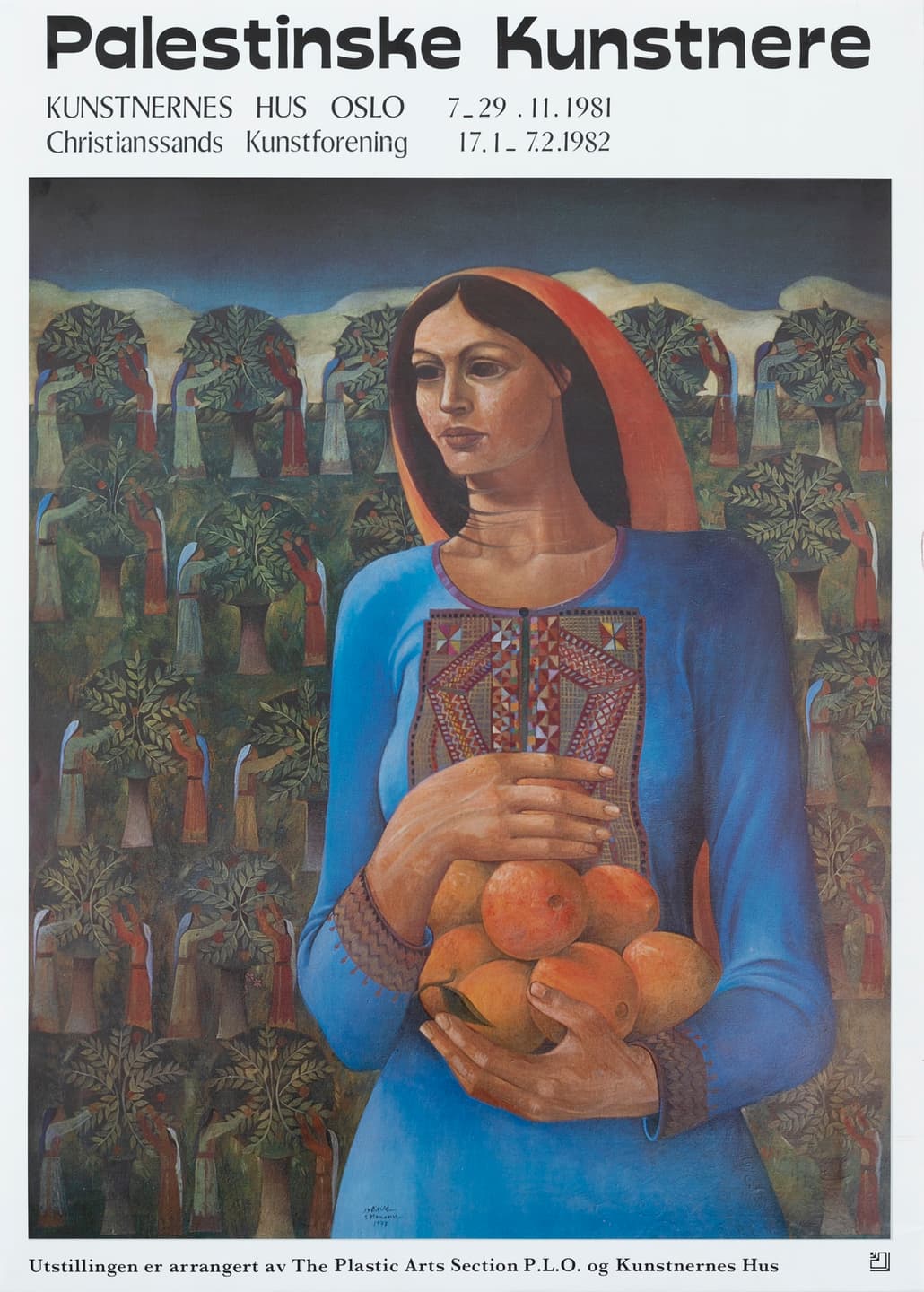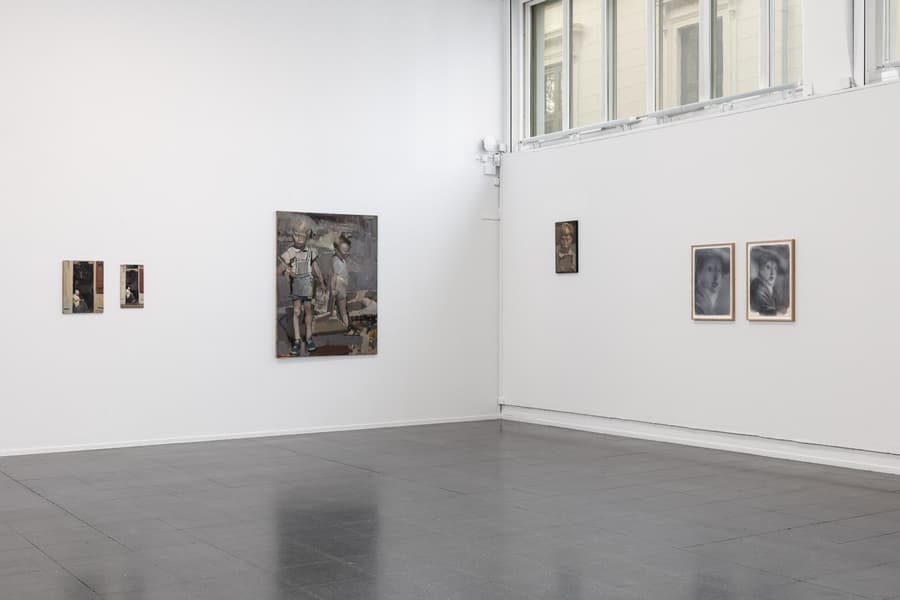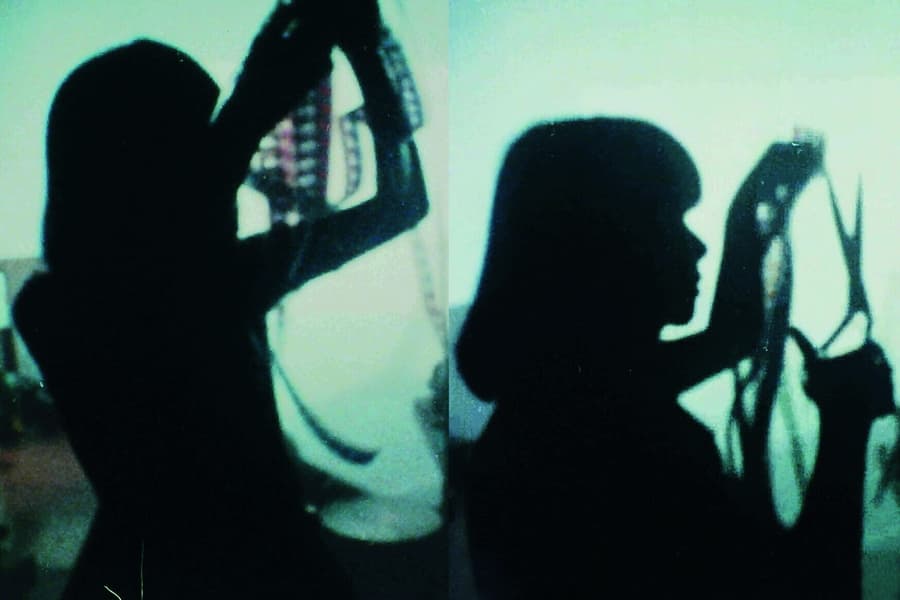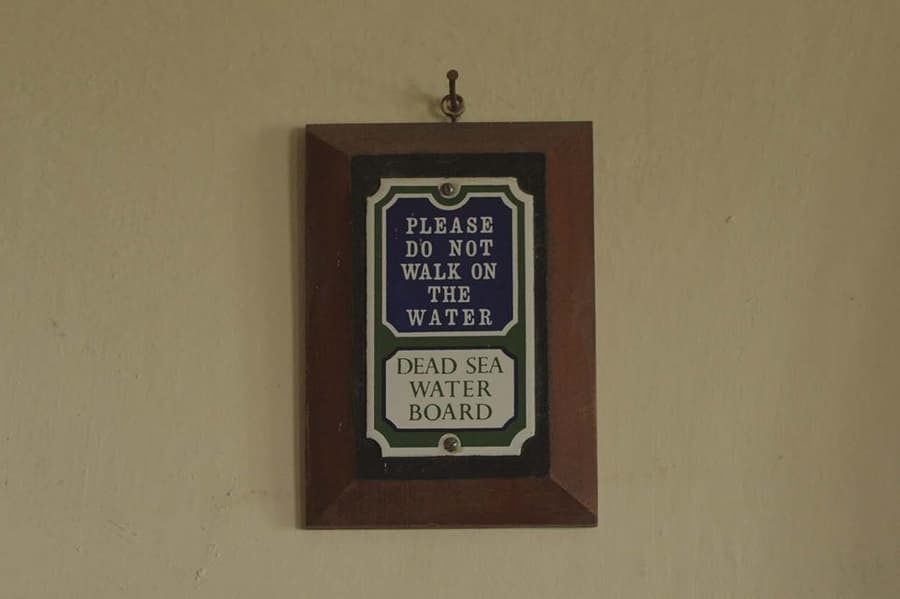Palestinian Artists

In November 1981, 16 Palestinian artists were exhibited at Kunstnernes Hus. The exhibition was organized in collaboration with The Plastic Arts Section P.L.O.
Foreword to the catalogue
For us in Norway, it is surprising that the Palestinians have their own organization for visual artists - their BKS. Surprisingly, the information you get through the international telegram agencies and our own press tells about the PLO's militia activities, but little or nothing about the diversity of the PLO's organization, health care, education, small industry, crafts and culture. Here, great emphasis is now placed on developing an environment for the visual arts.
Their visual arts organization is in a pioneering phase.
The artists live scattered. After the state of Israel was established in 1948 and a large part of the Palestinian people were expelled from their homeland, many live in refugee camps in Lebanon, others in Jordan, Syria and other Arab countries, some also in the Western world.
In addition, Palestinian artists work in Israel, in the occupied territories, and here under very difficult conditions. When we visited Beirut earlier this year, the artists' organization was informed that the Palestinian painter Suleiman Mansour, who was to open an exhibition, had had the exhibition suspended for the opening and the pictures seized.
Palestinian culture means Palestinian identity.
It is difficult to imagine a visual art for a people without a homeland. The harsh life in the refugee camp in poor housing and the fear of Israeli bombs, the hopeless conditions of the Palestinians in Israel and the occupied territories provide meager fertile ground for artistic activity. To compare Palestinian artists' relationship with goods would be absurd. We were talking about Norwegian decoration policy, and a Palestinian sculptor said: "For me, creating a monumental sculpture is a wishful dream. Where should it be set up in Palestine?"
We hope for a better future for the Palestinian people, a peaceful and just solution in the Middle East. We hope for a rich development for the Palestinian visual arts and welcome our Palestinian colleagues to Kunstnernes Hus.
— Thorstein Rittun (Chairman of the board)
Introduction to the catalogue
The Palestinian artist faces a number of tasks:
First: They must create and develop their artistic language, a language that must both express the Palestinian reality and be part of the international artistic development.
Second: Through their art, they must seek to engage their people, developing an artistic awareness that is part of the political consciousness.
Third: They must strive to make their art known to the outside world in order to participate in the work of explaining their people's struggle and their right to liberate their occupied land. The international character of the visual language makes it easier to reach other people through visual art than through political or literary language.
Fourth: The Palestinian artist must respond to the Zionist challenge in Palestine. After having occupied our land and cast our people into exile, the Zionists are now trying to steal our ancient culture and convince the world that this culture is their own. The Palestinian artist, who has this culture deeply embedded in their mind, seeks to express it in their artworks.
Both in exile and under Zionist occupation, the Palestinian artist lives under very difficult and uncertain conditions.
In 1980, the Zionist authorities closed the only exhibition hall in Ramallah and confiscated works by Suleiman Mansour and other artists. This was done under the pretext that the artworks were "against national security." Several visual artists were banned from exhibiting or traveling. This exhibition in Norway features some of these works that represent a "threat to Israel's security."
Palestinian art is part of the Palestinian people's general struggle for freedom. As Yasser Arafat says: "The Palestinian revolution is built on the fighters' rifles, the poets' poems, the artists' works, and the workers' arms. All our forces must come together to liberate our occupied land."
This exhibition is a greeting from the Palestinian artists to the Norwegian people, and we send it in the hope that our voice will be heard—in solidarity and friendship.
— Mona Saudi (Plastic Arts Section P.L.O.)
Participating artists
Imad Abdul Wahab (b. 1950, Palestine)
Kamal Boullata (b. 1942, Jerusalem)
Moustafa Hallaj (b. 1938, Jaffa)
Samira Badran (b. 1950, Palestina)
Jumana Husseini (b. 1932, Jerusalem)
Samia Halaby (b. 1936, Palestina)
Mohammed Hajras (b. 1942, Cairo)
Ibrahim Ghannam (b. 1930, Haifa)
Burhan Karkutly (b. 1942, Damascus)
Abdul-Hai Moussalam (b. 1933, Khalil, Palestina)
Abdul Rahman Mouzzayen (b. 1943, Palestine)
Suleiman Mansour (b. 1947, Ramallah)
Hussni Radwan (b. 1955, Itbid)
Samir Salameh (b. 1945, Safad, Palestina)
Mona Saudi (b. 1945, Amman)
Vladimir Tamari (b. 1942, Jerusalem)


